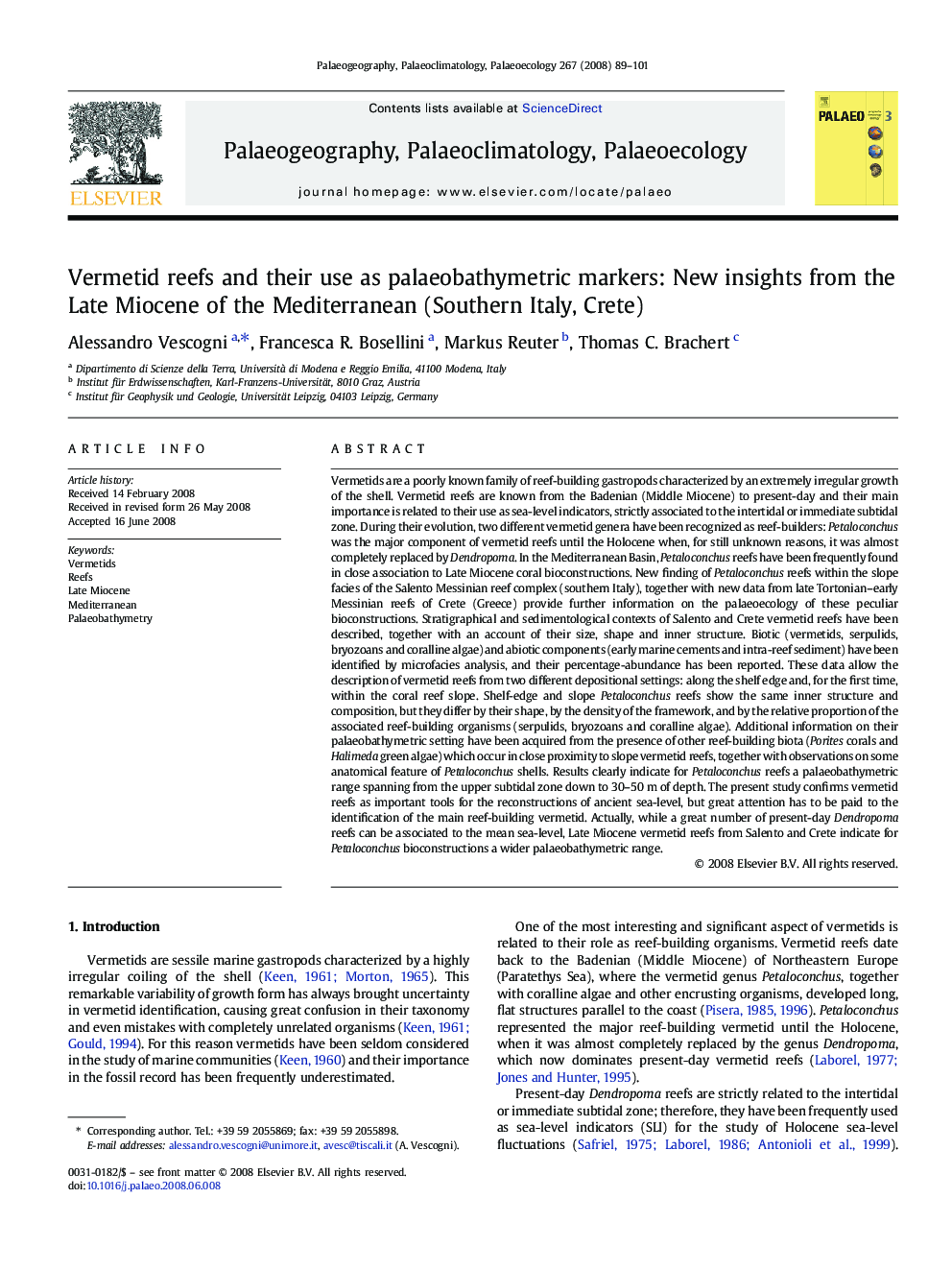| کد مقاله | کد نشریه | سال انتشار | مقاله انگلیسی | نسخه تمام متن |
|---|---|---|---|---|
| 4468370 | 1622320 | 2008 | 13 صفحه PDF | دانلود رایگان |

Vermetids are a poorly known family of reef-building gastropods characterized by an extremely irregular growth of the shell. Vermetid reefs are known from the Badenian (Middle Miocene) to present-day and their main importance is related to their use as sea-level indicators, strictly associated to the intertidal or immediate subtidal zone. During their evolution, two different vermetid genera have been recognized as reef-builders: Petaloconchus was the major component of vermetid reefs until the Holocene when, for still unknown reasons, it was almost completely replaced by Dendropoma. In the Mediterranean Basin, Petaloconchus reefs have been frequently found in close association to Late Miocene coral bioconstructions. New finding of Petaloconchus reefs within the slope facies of the Salento Messinian reef complex (southern Italy), together with new data from late Tortonian–early Messinian reefs of Crete (Greece) provide further information on the palaeoecology of these peculiar bioconstructions. Stratigraphical and sedimentological contexts of Salento and Crete vermetid reefs have been described, together with an account of their size, shape and inner structure. Biotic (vermetids, serpulids, bryozoans and coralline algae) and abiotic components (early marine cements and intra-reef sediment) have been identified by microfacies analysis, and their percentage-abundance has been reported. These data allow the description of vermetid reefs from two different depositional settings: along the shelf edge and, for the first time, within the coral reef slope. Shelf-edge and slope Petaloconchus reefs show the same inner structure and composition, but they differ by their shape, by the density of the framework, and by the relative proportion of the associated reef-building organisms (serpulids, bryozoans and coralline algae). Additional information on their palaeobathymetric setting have been acquired from the presence of other reef-building biota (Porites corals and Halimeda green algae) which occur in close proximity to slope vermetid reefs, together with observations on some anatomical feature of Petaloconchus shells. Results clearly indicate for Petaloconchus reefs a palaeobathymetric range spanning from the upper subtidal zone down to 30–50 m of depth. The present study confirms vermetid reefs as important tools for the reconstructions of ancient sea-level, but great attention has to be paid to the identification of the main reef-building vermetid. Actually, while a great number of present-day Dendropoma reefs can be associated to the mean sea-level, Late Miocene vermetid reefs from Salento and Crete indicate for Petaloconchus bioconstructions a wider palaeobathymetric range.
Journal: Palaeogeography, Palaeoclimatology, Palaeoecology - Volume 267, Issues 1–2, 19 September 2008, Pages 89–101